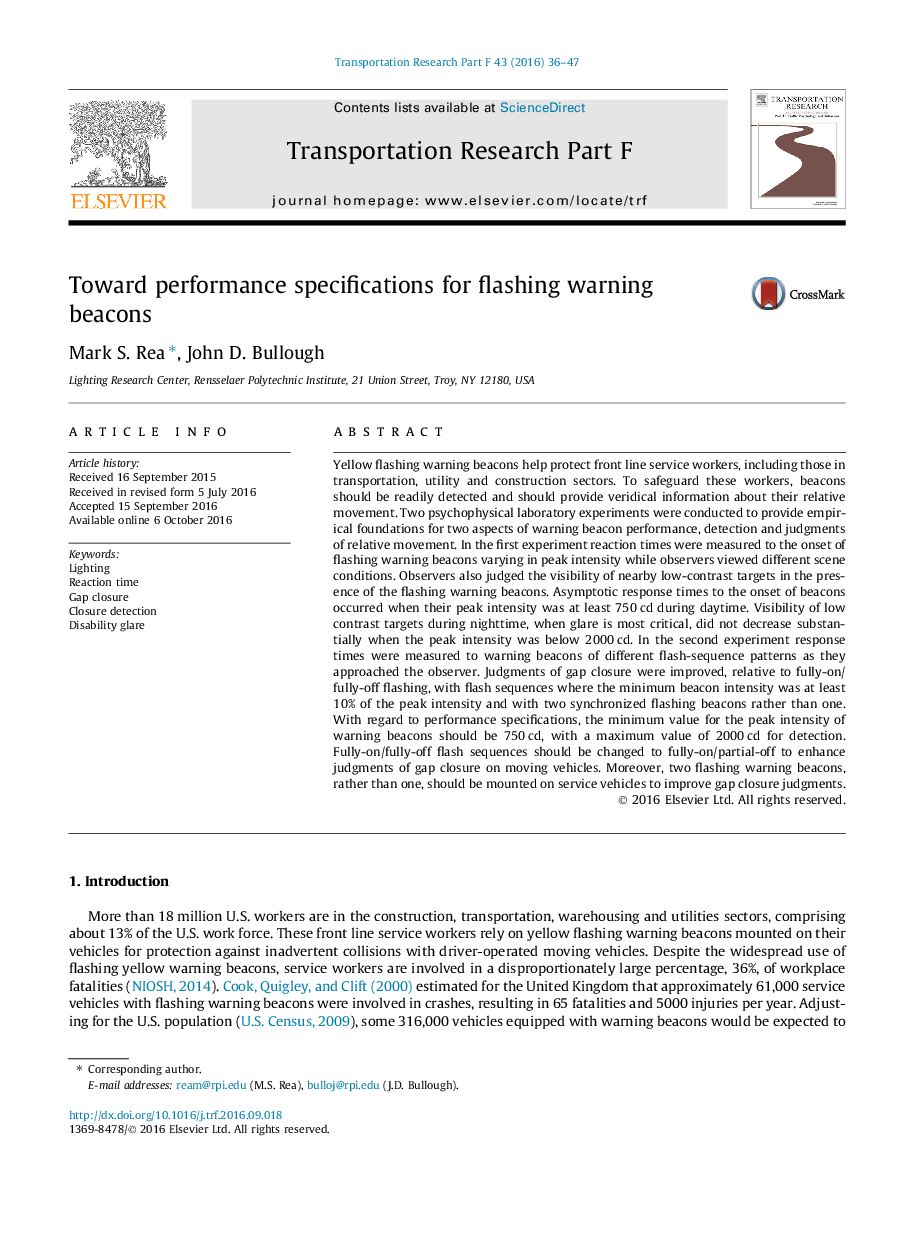| کد مقاله | کد نشریه | سال انتشار | مقاله انگلیسی | نسخه تمام متن |
|---|---|---|---|---|
| 5037471 | 1472442 | 2016 | 12 صفحه PDF | دانلود رایگان |
- Flashing warning lights help protect transport, utility and construction workers.
- Psychophysical studies of warning light detection and closure judgment were made.
- Minimum peak flash intensity for detecting warning beacons should be 750Â cd.
- Two warning beacons are better than one for judging closure distance.
- Full-on/full-off warning beacon flash patterns are poor for judging closure distance.
Yellow flashing warning beacons help protect front line service workers, including those in transportation, utility and construction sectors. To safeguard these workers, beacons should be readily detected and should provide veridical information about their relative movement. Two psychophysical laboratory experiments were conducted to provide empirical foundations for two aspects of warning beacon performance, detection and judgments of relative movement. In the first experiment reaction times were measured to the onset of flashing warning beacons varying in peak intensity while observers viewed different scene conditions. Observers also judged the visibility of nearby low-contrast targets in the presence of the flashing warning beacons. Asymptotic response times to the onset of beacons occurred when their peak intensity was at least 750Â cd during daytime. Visibility of low contrast targets during nighttime, when glare is most critical, did not decrease substantially when the peak intensity was below 2000Â cd. In the second experiment response times were measured to warning beacons of different flash-sequence patterns as they approached the observer. Judgments of gap closure were improved, relative to fully-on/fully-off flashing, with flash sequences where the minimum beacon intensity was at least 10% of the peak intensity and with two synchronized flashing beacons rather than one. With regard to performance specifications, the minimum value for the peak intensity of warning beacons should be 750Â cd, with a maximum value of 2000Â cd for detection. Fully-on/fully-off flash sequences should be changed to fully-on/partial-off to enhance judgments of gap closure on moving vehicles. Moreover, two flashing warning beacons, rather than one, should be mounted on service vehicles to improve gap closure judgments.
Journal: Transportation Research Part F: Traffic Psychology and Behaviour - Volume 43, November 2016, Pages 36-47
